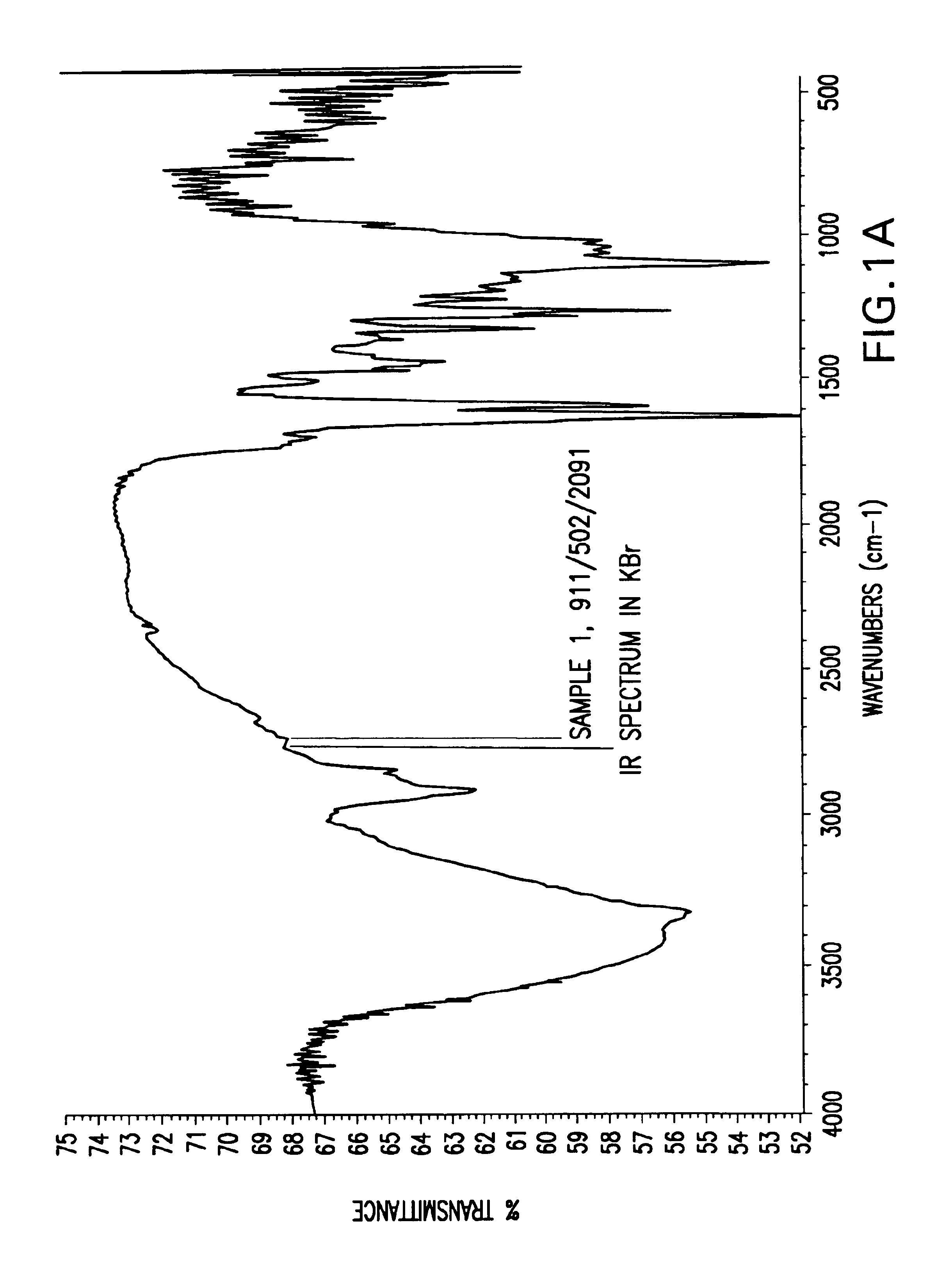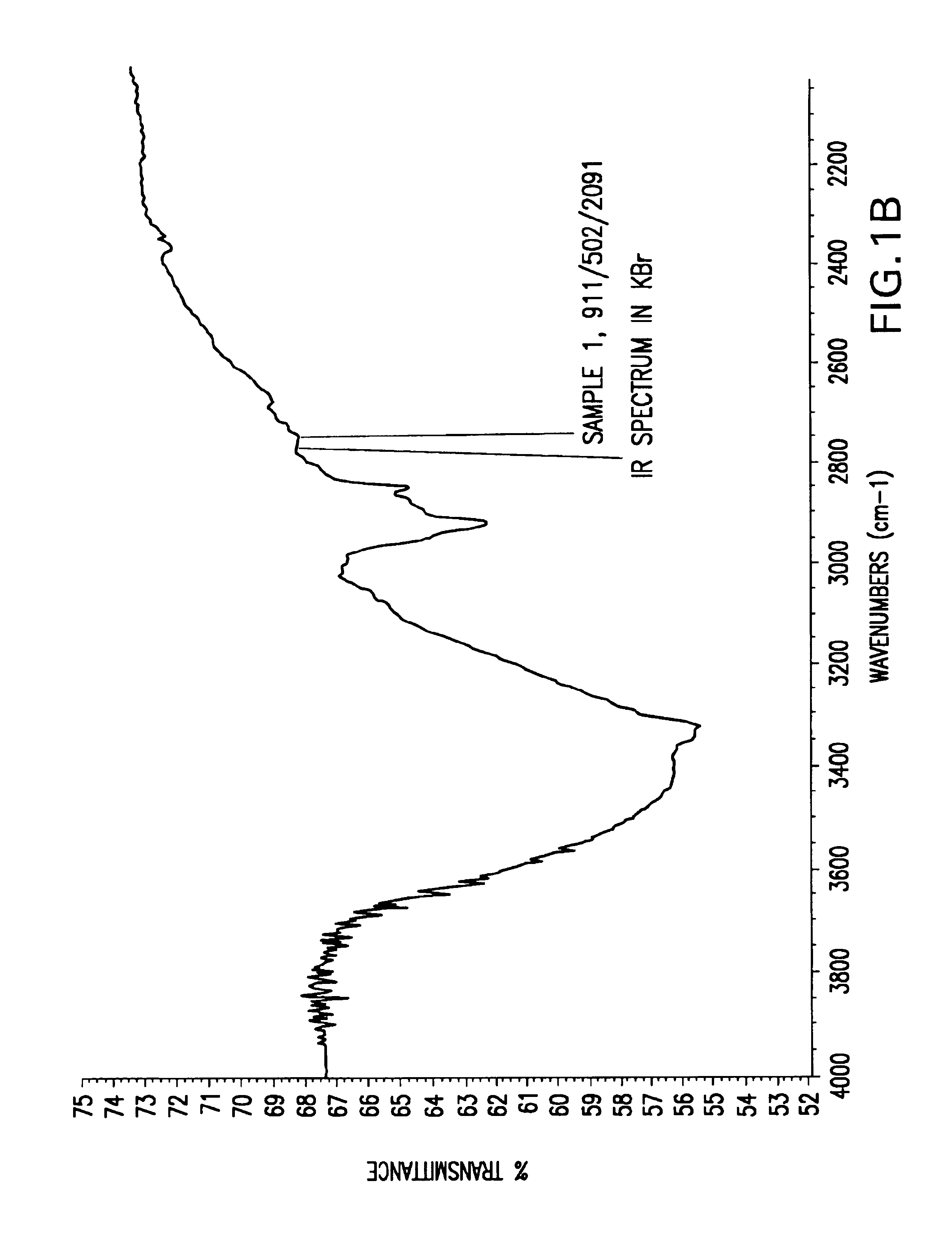Agropolymer containing a carbohydrate and silica matrix from plants
a technology of plant carbohydrate and silica matrix, applied in the field of new agropolymer, can solve the problems of insufficient quantity, high cost of above materials, and inability to meet the requirements of industrial use, and achieve the effect of reducing overall environmental pollution and improving water pollution control
- Summary
- Abstract
- Description
- Claims
- Application Information
AI Technical Summary
Benefits of technology
Problems solved by technology
Method used
Image
Examples
example 1
IR Spectroscopy Results of Various Agropolymers
[0056]In these examples, raw husks, hulls or seed coats were micronized, and IR spectroscopy was performed using KBr pellets. The agropolymer samples used herein were treated with ferric chloride and dried before the IR spectroscopy was performed. IR spectroscopy of each sample was performed in three patterns: (A) total scans, representing 4000 to 500 wavenumbers (cm−1); (B) scans from 4000 to 2200 wavenumbers (cm−1); and (C) scans from 2000 to 600 wavenumbers (cm−1). Thus, in FIGS. 1-24, each figure is denoted (A), (B), or (C), and this denotation represents the IR spectroscopy pattern from the list above that was performed in the particular example.
[0057]As shown in FIGS. 1-4, IR spectra of various samples of rice husk revealed that the alkaline hydrogen peroxide treatment to rice husk resulted in more reactive bonds or more organometallic bonds.
[0058]As shown in FIGS. 5-8, the IR spectra revealed more reactive organometallic bonds wh...
example 2
Examination of Metal Sequestration of Agropolymers Derived from Seed Coats or Hulls of Oryza Sativa, Panicum Miliaceum, and Setaria Italica
[0068]In this example, two 1.0 gram agropolymer samples were placed in 1000 mL volumetric flasks, which were filled to 1000 mL with 20.0 PPM standard copper and silver solutions respectively. These agropolymer samples were produced using the alkaline treatment method. The solutions were then kept for 2 hours with regular shaking in between, and were subsequently filtered. The resulting copper and silver present in the solutions was then estimated spectrophotometrically. The difference between the metal content present in solution before and after addition of agropolymer indicates the metal absorbing or sequestering capability of the particular agropolymer used.
[0069]Table 1 depicts the results of sequestered copper and silver by agropolymers.
[0070]
TABLE 1METAL SEQUESTRATION OF AGROPOLYMERS PRODUCEDBY ALKALINE TREATMENT METHODCOPPERSILVERCONTENTC...
example 3
Examination of Metal Sequestration Using Metal-Impregnated Agropolymers
[0072]Agropolymers exhibit a higher capability of metal sequestration in solutions containing higher metal concentrations. Thus, further studies were performed in order to allow the agropolymers to absorb more metal in higher metal concentration solutions with longer retention times of up to 12 to 24 hours. Agropolymers were added to solutions containing metals such as iron or aluminum, and unbound metal was removed by thorough washings with water and / or by neutralization with alkali in cases where the reaction medium had an acidic pH. Subsequently, the material was dried. Metal-impregnated agropolymer was then placed in a beaker, wherein 250 mL of water was added and stirred well. Then, the agropolymer material was filled on a column mode. The agropolymer material present in the column was washed with 50 mL of 1.0 M acid to obtain bound metal. The metal content in acid washings was estimated spectrophotometrical...
PUM
| Property | Measurement | Unit |
|---|---|---|
| temperature | aaaaa | aaaaa |
| wavelength | aaaaa | aaaaa |
| infrared spectroscopy | aaaaa | aaaaa |
Abstract
Description
Claims
Application Information
 Login to View More
Login to View More - R&D
- Intellectual Property
- Life Sciences
- Materials
- Tech Scout
- Unparalleled Data Quality
- Higher Quality Content
- 60% Fewer Hallucinations
Browse by: Latest US Patents, China's latest patents, Technical Efficacy Thesaurus, Application Domain, Technology Topic, Popular Technical Reports.
© 2025 PatSnap. All rights reserved.Legal|Privacy policy|Modern Slavery Act Transparency Statement|Sitemap|About US| Contact US: help@patsnap.com



